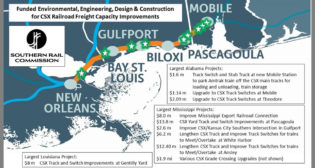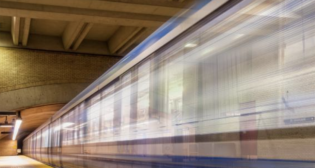
Safety outreach urgent as transit improves
Written by Lyndon HenryThe good news is that fast public transport services are making a comeback in America's urban cityscapes, taking the form of electric light rail transit (LRT), regional passenger rail ("commuter rail"), and even Bus Rapid Transit. And Amtrak's intercity rail passenger services—which overwhelmingly use surface alignments through urban and suburban areas— may be gradually getting better in both speed and frequency on some routes in future years.
But this is happening so quickly, it’s tending to take the public, especially the motoring public, by surprise. What they’ve usually thought were just occasional, slow, plodding trains on sleepy rail lines in some cases are being re-invented as fairly rapid, vibrant passenger operations running on much more frequent headways.
An article I recently published (on the HubPages E-zine) highlights the safety issue:
• Faster U.S. surface transit raises need for rail safety awareness of public
It focuses on four systems whose problems with motor vehicle collisions have particularly stood out from all the rest:
• Los Angeles’s Blue Line LRT
• Miami area’s South Miami-Dade Busway
• Houston’s MetroRail
• Los Angeles’s Orange Line Busway
A huge part of the problem, my analysis points out, lies with lousy public awareness of the dangers of trains in general, and unfamiliarity with the potential of a fast urban transit train (or bus) to clobber you. But it’s not just transit; Amtrak, too, runs almost always on the surface through urban and suburban areas.
In contrast with the European approach, America’s transportation officials have generally downplayed the safety implications of laying new level crossings across surface tracks, while grade separations are commonplace throughout European metro areas. As a result, according to Operation Lifesaver, every three hours a person or vehicle in the U.S. is hit by a train.
And, says the article, pedestrian accidents are a glaring problem also—and young people are especially oblivious to the dangers, with a penchant for walking on tracks with their common sense left in a locker somewhere. Among the most dangerous behaviors highlighted are walking on the tracks with loud music blaring out of earbuds or headphones, and walking while texting. And — can you believe this? — lying down on the tracks and dozing off (often after alcohol or recreational drugs).
Is there a remedy? Well, nothing can totally eradicate at least occasional recklessness, but some degree of aggressive upgrading in rail safety programs through vigorous government action is suggested — especially rail safety outreach programs. I’ve addressed this in another article:
• U.S. rail safety outreach awareness programs needed
In this article, I’ve tried to sketch out a vigorous public education campaign emphasizing the potential hazards of dangerous behavior and reinforcing proper procedures and safe practices around railroad tracks.
These issues are also covered in a paper I presented (with a couple of colleagues) to the American Public Transportation Association Rail Conference in 2008; it’s summarized here:
• Innovative Rail Safety Outreach for a New Rail Transit Service in Austin, Texas
If rail safety is a strong concern, you should make your opinion heard. Get enough of us doing that, and maybe we can influence some major new rail safety outreach policy initiatives.



